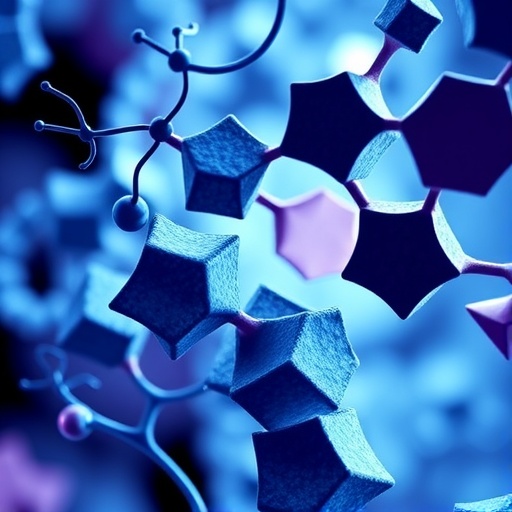Cellular functions rely on several communications networks that allow cells to rapidly respond to signals affecting the organism. A new study published in the prestigious journal Molecular Cell has revealed a mechanism that shuts down a major cell-to-cell communications pathway implicated in a number of diseases. INRS professor Nicolas Doucet and his research team contributed to the discovery of this new molecular switch, shedding new light on the role of receptor tyrosine kinases, a well-known protein family whose function is still being explored.
In a complex organism, cells have to coordinate and control widely separated actions to allow the organism to develop normally and carry out its vital functions. For example, a hormone secreted by one organ might act on the cells of another. A host of messages are constantly travelling throughout the body to keep biological processes running smoothly.
Why you cannot live without cell receptors
If we could observe a human cell in enough detail, it would appear to be bristling with all kinds of molecular sensors and receivers, like a forest of antennas on a roof performing a bewildering variety of different tasks. Most are specialized proteins–known as receptor proteins.
Receptor tyrosine kinases (RTKs) are a family of proteins that carry out many tasks required for organism growth and maintenance. They are found in every cell of the human body and broadly act on processes ranging from cell organization to nutrient management. Despite their distinct roles, they conserve a high degree of structural similarity at the molecular level, suggesting that each component of their three-dimensional structure plays an important role in their biological function. However, only recently has technology become sufficiently precise to peer into key molecular interactions of RTKs at the atomic level.
A design honed through evolution
RTK receptors embedded in the cell membrane stick their 'sensory receivers' outside the cell and extend their enzymatic machinery inside the cell. Part of their equipment is a kinase, an enzyme that activates other proteins by adding a phosphate group to specific amino acids on their surface. This process is known as phosphorylation.
To activate a cellular signaling pathway, RTKs pair up as soon as a receiver picks up a signal. Linking together involves reciprocal action, with each partner accepting a phosphate group from the other. All partners then line up in such a way that they can interact with a new molecule, thus initiating the required cellular function.
The riddle of the shutdown switch
Université Laval and INRS researchers were trying to figure out how signal pathways were shut down. Some of the mechanisms that inactivate and recycle RTKs are known, but they are too slow to account for what has been observed inside cells. These observations suggest that there is a faster way to shut down these cellular processes.
To better understand what happens at the molecular level between RTK complexes, a family of signaling pathways was analyzed–the one involving the RTK EPHA4 and the adaptor protein NCK, which regulates fundamental processes such as cytoskeletal reorganization, cell migration, and the establishment of neuronal circuitry.
At INRS, Prof. Doucet's team analyzed the 3D structure of the protein partners at the atomic level. Using nuclear magnetic resonance (NMR) and computer-assisted molecular modelling, they showed that NCK contains a tyrosine amino acid that is extremely important in cellular signalling. This tyrosine is also conserved in these proteins throughout evolution. When NCK binds to EPHA4, the protein partners are perfectly aligned to allow the tyrosine to receive a phosphate group.
Proteins: giants among molecules
One of the main difficulties Prof. Doucet's research team had to face was the need to clearly demonstrate that NCK and EPHA4 could recognize each other at the molecular level. If not, phosphorylation would be off the table.
"The thing is," said Prof. Doucet, a molecular engineering specialist, "you cannot assume two proteins will simply recognize each other out of the blue just because you want them to based on your hypothesis. Since what they do is invisible to the naked eye, it takes some pretty advanced molecular technology to convincingly illustrate that this actually happens."
"This requires credible computer models grounded both in known experimental data and calculation algorithms that analyze the probability of forming these protein complexes," he continues. "What complicates matters is the fact that proteins are enormous molecules on the atomic scale. There are thousands of atoms to account for in our calculations, each of them simultaneously repelling or attracting the others. All those interactions are governed by physical and mathematical forces that are well known but extremely complex, and it takes a lot of computing power to analyze them all at once."
But the team delivered the goods, refining the algorithms and measurements. In collaboration with researchers at Université Laval, they successfully observed the cellular mechanism both in vitro and in vivo.
A new key for cell-to-cell communications
The key discovery of this study is the following–as soon as NCK is phosphorylated on this particular tyrosine, it drops whatever its doing and shuts down the cell-to-cell communication circuit. The researchers, many of whom are members of PROTEO, the Québec Network for Research on Protein Function, Engineering, and Applications, characterized this shutdown effect both in vitro and in vivo.
The newfound switch adds to our understanding of cell-to-cell signalling because it partially accounts for the speed at which the message is controlled from outside the cell. NCK turns signals off without the need to dismantle the RTK complex, which remains active on the cell surface and continues to pick up new signals. Other uncharacterized events control when the complex and NCK resume activity.
The team has uncovered a big piece of the cell signalling puzzle, opening up new possibilities for research on diseases such as cancer and diabetes, where RTK receptors are known to play important roles. The new key for controlling RTKs is certainly exciting, but plenty of research lies ahead before anyone gets to flip the switch.
###
The article "Direct Phosphorylation of SRC Homology 3 Domains by Tyrosine Kinase Receptors Disassembles Ligand-Induced Signaling Networks" appeared in Molecular Cell on June 21, 2018, with authors Ugo Dionne, François J. M. Chartier, Yossef López de los Santos (postdoctoral fellow in Prof. Doucet's lab), Noémie Lavoie, David N. Bernard (doctoral candidate in Prof. Doucet's lab), Sara L. Banerjee, François Otis, Kévin Jacquet, Michel G. Tremblay, Mani Jain, Sylvie Bourassa, Gerald D. Gish, Jean-Philippe Gagné, Guy G. Poirier, Patrick Laprise, Normand Voyer, Christian R. Landry, Nicolas Doucet, and Nicolas Bisson. The study was funded by the Natural Sciences and Engineering Research Council of Canada, the Canadian Institutes of Health, Canada Research Chairs, Fonds de recherche du Québec – Santé, the Québec Breast Cancer Foundation, PROTEO-the Québec Network for Research on Protein Function, Engineering, and Applications, and the U.S. National Institutes of Health (NIH).
Media Contact
Stephanie Thibault
[email protected]
514-499-6612
@U_INRS
http://www.inrs.ca/english/actualites/discovery-new-onoff-switch-affecting-cell-cell-communications
Related Journal Article
http://dx.doi.org/10.1016/j.molcel.2018.05.013




